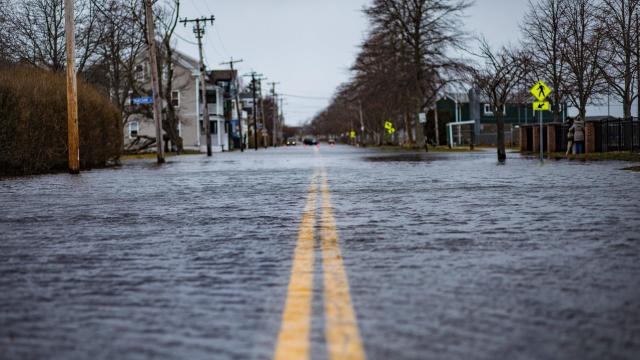Different regions of the U.S. are prone to different types of natural disasters. While you may already have a basic emergency kit on hand with food, water, and a first aid kit, there are other tools you can — and should — invest in, depending on where you live and the type of natural disaster most likely to strike near you.
Tools to have in case of an earthquake
Major earthquakes in the U.S. mainly occur along the West Coast and can cause major structural damage — including to utilities. If you live in an area prone to earthquakes and may need to shut off water or gas lines, a shutoff tool is an essential for your emergency kit. If you don’t have one of those, a large, adjustable wrench can work in a pinch. This will fit different sizes of shut-offs, and can come in handy even if the handles are broken.
Another important thing to have on hand is a fire extinguisher. Downed power lines and gas main ruptures can cause fires — even small shorts in local electrical service can spark a blaze. Be prepared with an up-to-date, fully charged fire extinguisher. For a more compact option, you can also keep aerosol fire spray on hand.
Other tools you should always have are pliers, a good knife, and scissors, all of which are versatile in an emergency. And last on the list is a light source: Most authorities recommend a lantern or flashlight with plenty of batteries, but to free up your hands, you can add a good headlamp to your list, too. This will come in handy if the power goes out and you need to navigate through damage to your home.
Tools to have in case of flooding
Flooding can be an issue in almost any climate zone where there are heavy rains and bodies of water. It can also be a localised issue in the case of a water main rupture. To start with, a flood emergency kit needs to be waterproof so your tools and supplies don’t get damaged, so a waterproof case is recommended to keep batteries and smaller items safe, and you can use a dry bag to help keep your larger emergency supplies safe.
A flood alarm is another a good investment if you live in an area where flooding is common — it will detect rising water levels in your basement or ground floor so you know early on that flooding is occurring. These come in wired and battery-operated models and can also be found in smart varieties that will send an alert to your phone. Note that if utilities are disrupted, cell phone service and power might go out. If you’re in a flood-prone region, it’s a good idea to invest in a good quality battery operated model so it will work in the event of a natural disaster. Of course, a good quality water resistant flashlight is also important to keep on hand.
Tools to have in case of wildfires
Major wildfires are becoming more common on the West Coast of the U.S. These can cause evacuations, toxic air, and, of course, can burn down homes. In most cases of wildfire, the immediate need is to evacuate quickly, but if you have time, you might be able to do a few things to protect your home. If you’re in a region where cinders and sparks can be blown into your yard and onto your roof, using an extra-long garden hose to water down the area and your roof is a common safety measure. Clearing your yard of overgrowth and long grass or dead leaves can also help prevent damage in some cases.
Having one or two extra furnace or HVAC filters that are rated for smoke (above a MERV 10) is a smart way to prepare for wildfire season. Furnace filters can get clogged quickly with ash and soot, so have a spare on hand before disaster hits and every hardware store in town sells out.
It’s also a good idea to have a “go bag” ready. You can get fire resistant bags to protect your gear and important documents, and they’re good to have in case of a house fire, as well. If you need to travel in heavy smoke, a good respirator fitted with the proper cartridge is a big help. A P100 respirator or an N95 mask can help protect your lungs from exposure to smoke and soot. It’s a good idea to have a few of these on hand in case of emergency so that you aren’t depleting the supply of safety gear available to emergency workers during a disaster.

Leave a Reply
You must be logged in to post a comment.